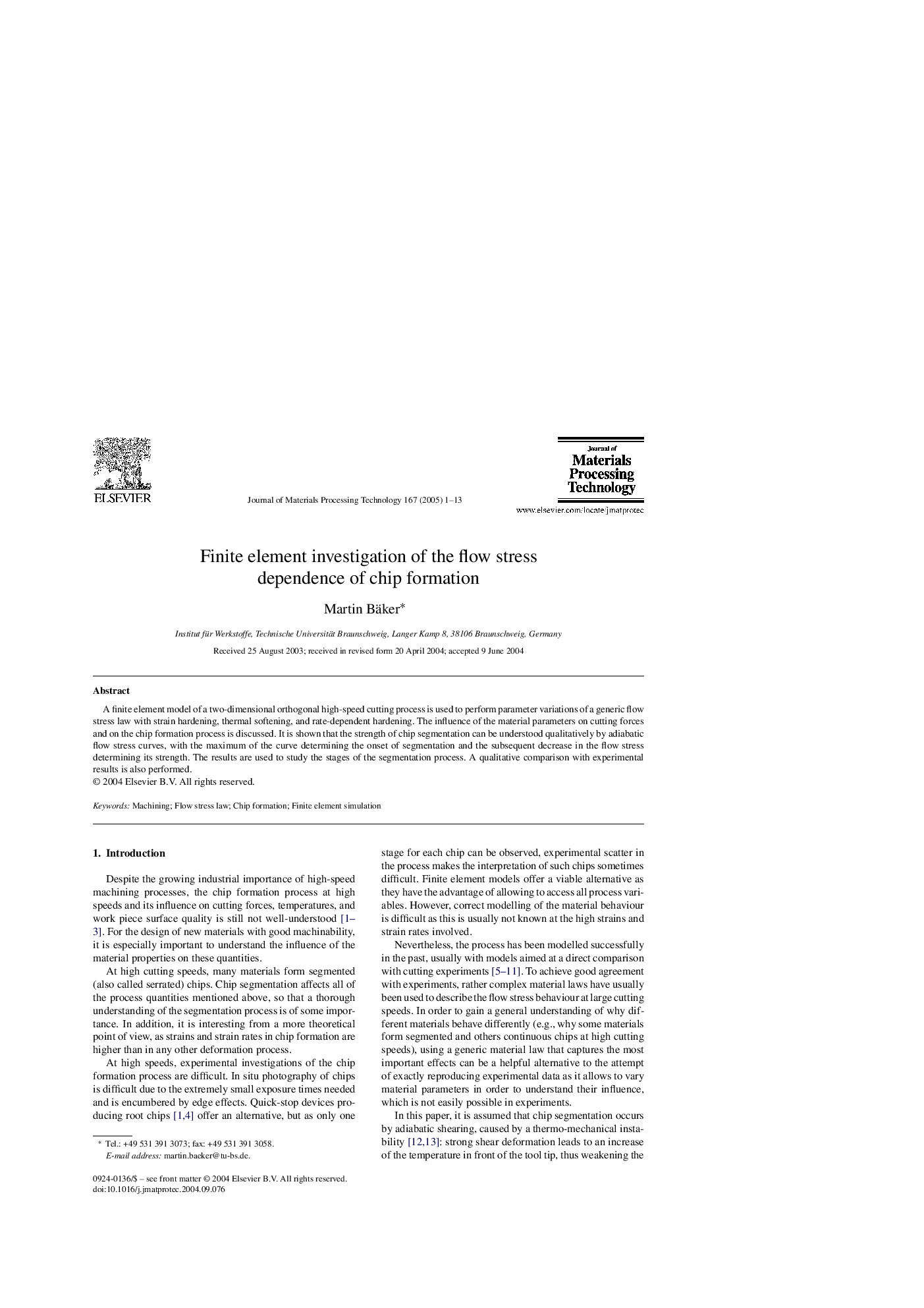| Article ID | Journal | Published Year | Pages | File Type |
|---|---|---|---|---|
| 10417589 | Journal of Materials Processing Technology | 2005 | 13 Pages |
Abstract
A finite element model of a two-dimensional orthogonal high-speed cutting process is used to perform parameter variations of a generic flow stress law with strain hardening, thermal softening, and rate-dependent hardening. The influence of the material parameters on cutting forces and on the chip formation process is discussed. It is shown that the strength of chip segmentation can be understood qualitatively by adiabatic flow stress curves, with the maximum of the curve determining the onset of segmentation and the subsequent decrease in the flow stress determining its strength. The results are used to study the stages of the segmentation process. A qualitative comparison with experimental results is also performed.
Related Topics
Physical Sciences and Engineering
Engineering
Industrial and Manufacturing Engineering
Authors
Martin Bäker,
